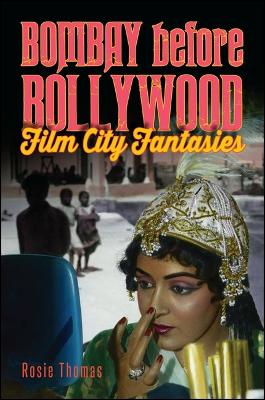SUNY series, Horizons of Cinema
1 total work
Bombay before Bollywood offers a fresh, alternative look at the history of Indian cinema. Avoiding the conventional focus on India's social and mythological films, Rosie Thomas examines the subaltern genres of the "magic and fighting films"—the fantasy, costume, and stunt films popular in the decades before and immediately after independence. She explores the influence of this other cinema on the big-budget masala films of the 1970s and 1980s, before "Bollywood" erupted onto the world stage in the mid-1990s.
Thomas focuses on key moments in this hidden history, including the 1924 fairy fantasy Gul-e-Bakavali; the 1933 talkie Lal-e-Yaman; the exploits of stunt queen Fearless Nadia; the magical neverlands of Hatimtai and Aladdin and the Wonderful Lamp; and the 1960s stunt capers Zimbo and Khilari. She includes a detailed ethnographic account of the Bombay film industry of the early 1980s, centering on the beliefs and fantasies of filmmakers themselves with regard to filmmaking and film audiences, and on-the-ground operations of the industry. A welcome addition to the fields of film studies and cultural studies, the book will also appeal to general readers with an interest in Indian cinema.
Thomas focuses on key moments in this hidden history, including the 1924 fairy fantasy Gul-e-Bakavali; the 1933 talkie Lal-e-Yaman; the exploits of stunt queen Fearless Nadia; the magical neverlands of Hatimtai and Aladdin and the Wonderful Lamp; and the 1960s stunt capers Zimbo and Khilari. She includes a detailed ethnographic account of the Bombay film industry of the early 1980s, centering on the beliefs and fantasies of filmmakers themselves with regard to filmmaking and film audiences, and on-the-ground operations of the industry. A welcome addition to the fields of film studies and cultural studies, the book will also appeal to general readers with an interest in Indian cinema.
